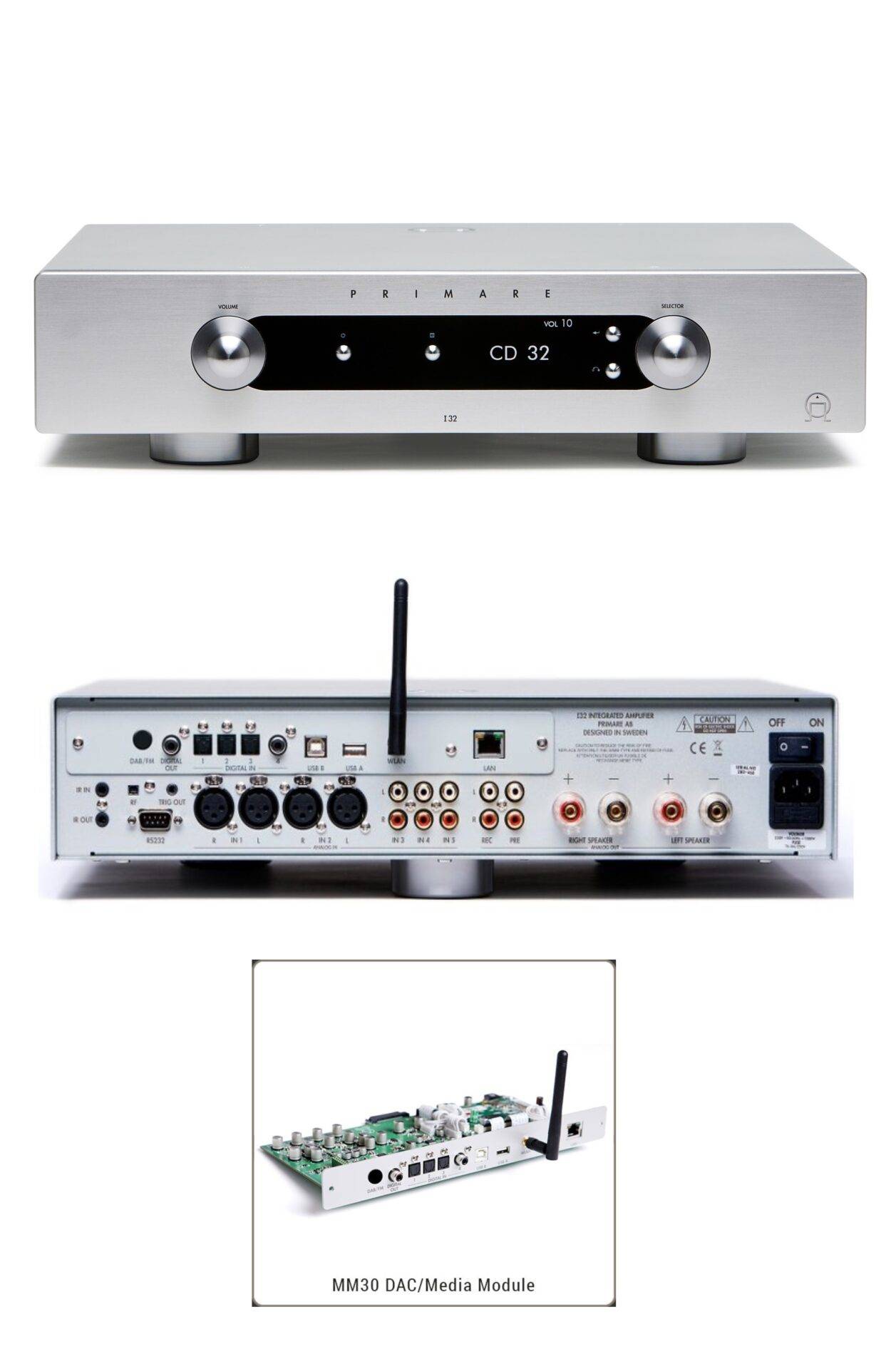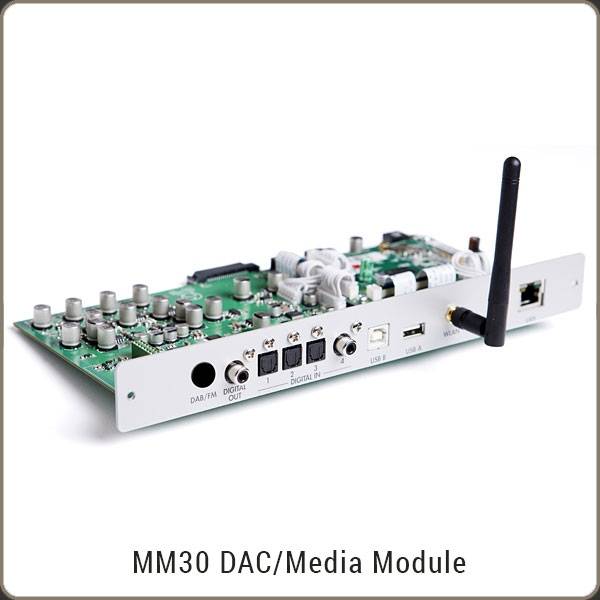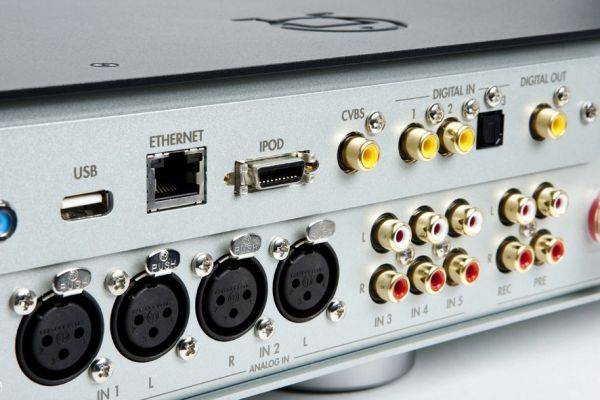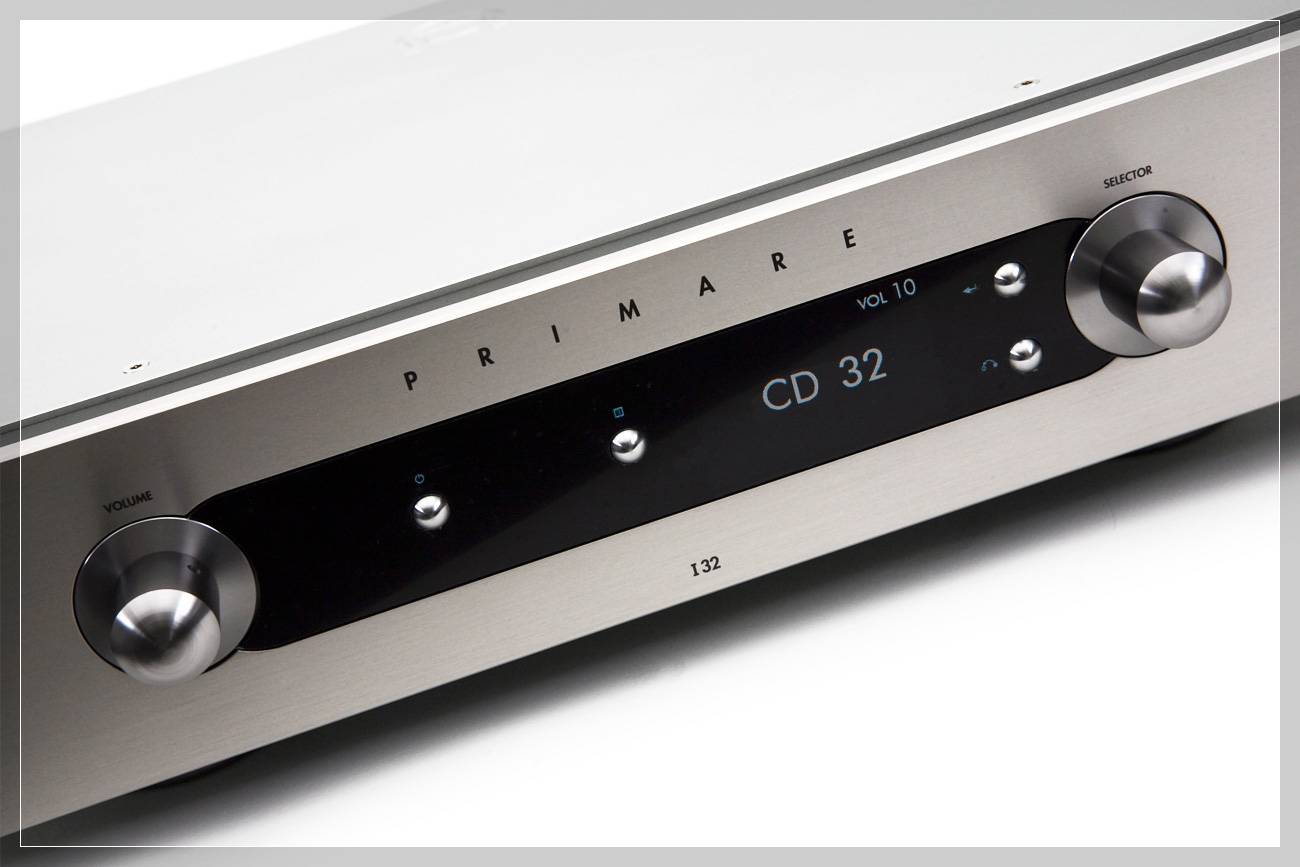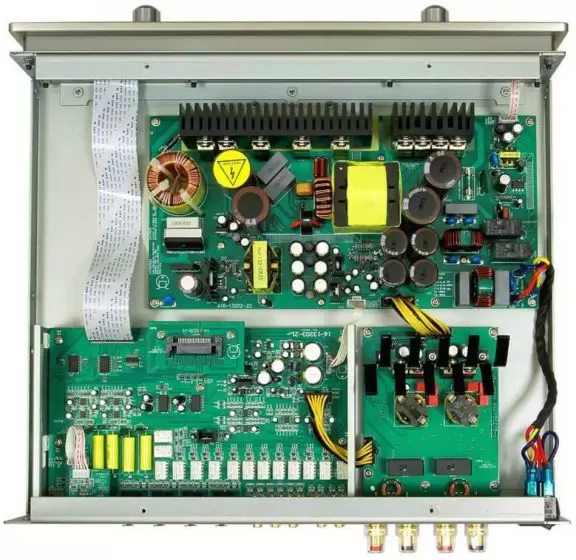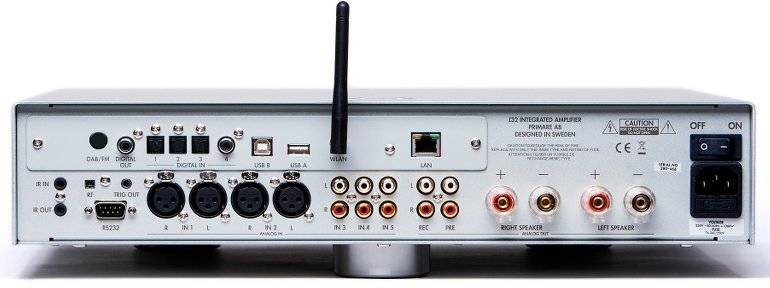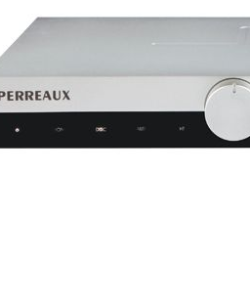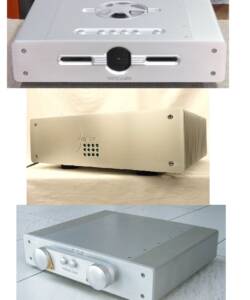Primare i32 Integrated Amplifier (Silver – No DAC)
Original price was: R67,000.00.R22,000.00Current price is: R22,000.00.
| On to the auditions. During my first get-to-know-you session I found myself surprisingly stuck on left-wing stuff, be it ethno fare from Marie Boine, prepared piano by Herbert Henk or Stockhausen’s Mantra. If I can enjoy such fare it’s mostly a sign that a component under assessment contributes novel insights into the material which I previously missed. |
 |
| To apply medias res, I then turned to classics. Liszt’s Preludes with the London Philharmonic Orchestra under Sir George Solti quickly determined that grand orchestral forces are a special fondness of the Primare. Here I first noticed the hall. Particularly impressive was how even during very subliminal passages this venue ambiance was audible – and how the entire orchestra seemed at the ready gathering momentum to pounce. The Primare excelled at conveying both this spaciousness and tension by resolving the very subliminal noises which cue our ear/brain into these attributes. |
|
||
 |
||
| Without deliberation I saw the scene of Stanley Kubrick’s A Clockwork Orange where Alex lies in bed facing a wall of speakers whilst listening to this movement. Incidentally the I32 is one of the few amplifiers where I strongly recommend the XLR inputs. This increases musical freshness over the RCAs. |
|
|||||||
 |
|||||||
| Remaining on jazzy ground for a bit longer, it’s rare to come across an amp in this price range which screws up tonal balance and the Primare hit all the right notes to seem neither too energetic nor dull. On nits it was about nuances that are harder to identify clearly. I did miss some of the more intimate moments which the Jadis offers with for example’s e.s.t.’s furious Live in Hamburg concert. The insistence of the prematurely passed Esbjörn Svensson’s piano play didn’t telegraph alike. Despite all its other talents the costlier Jadis bested the Primate on midband expressivity. The I32 isn’t really tonally recessed. Clearly its frequency response exhibits no wild squigglies. What was up? Further A/Bs with the Jadis put me on the right trail. |
| The Jadis retrieved more detail and microdynamic fluctuations in the critical vocal range. I noticed this predominantly with voices and particularly with those on vinyl. On Bettye LaVette’s Interpretations: The British Rock Songbook, the Jadis conveyed more information about how her pronunciation involves breath, vocal chords, lips, tongue and throat. The Primare simplified these elements. It didn’t manage to tease them out into individual parts. Digitally sourced voices followed suit. Lucinda Williams’ smoky pipes [World without Tears] were plainly more persuasive with valves. Granted I was shamefully pleased to have found something about the Primare to criticize. |
 |
| Conclusion. On technology Primare’s I32 is the height of tech. On features and trim there’s absolutely nothing to fault particularly when price enters the picture. On power efficiency and standby consumption one feels squarely future-proofed. I would recommend this machine to devotees of massive classical fare where its realistic roominess, dynamic verve and control over complexity shine. With Rock and Pop the Primare too is in its element if the speakers aren’t tuned too lean down low. Those who rather feel glued to the lips of a small Jazz combo leader or who consume their classical composers in small settings and preferably on period instruments might want to check whether the Swede does alright. |
Description

I’ll bet we all remember what our parents asked us before we went out to play on a Saturday afternoon. The fateful question was, “Did you finish your homework?” How this question applies to the digital wing of the high-end is just as fateful. As competitive and fast-moving as this segment is, pity the product that is brought out to play without having done its homework. After spending a lengthy period road-testing the new Primare I32 integrated amplifier, I can say without reservation that beyond its power, looks, and user flexibility, the Primare has done its homework and may even deserve some extra credit.
For those less familiar with this Scandinavian firm, Primare’s lineage can be traced to the stunning 900 Series and 200 Series products of Danish industrial designer Bo Christensen from the 1980s. More recently Primare has teamed with Xena Audio of Sweden—known for its Copeland and QLN brands—to bring together the talents of Primare’s Bent Nielsen and Xena’s Lars Pedersen. The final piece of the puzzle was filled in the late 1990s with the addition of brilliant engineer Bjorn Holmqvist.
Still, it’s been something of an on again/off again love story between the U.S. and Primare. Gaining a secure foothold in the American market can be a tortuous road for even the canniest foreign electronics manufacturer. Economic variables, marketing savvy, timing, or just dumb luck can make or break a company’s fortunes on this side of the pond. However, with the leadership of a new and highly experienced distributor in Kevin Wolff of Vana Ltd., my instinct tells me that Primare is here to stay on this go-round.
The I32 is a 120Wpc integrated amplifier, a rating that nearly doubles into 4 ohms with 230Wpc. Output power is achieved via twin proprietary Ultra Fast Power Device (UFPD) power modules, a Class D technology which has a consistent 26dB feedback-loop gain across the entire audio range and is stable way beyond the audio band like traditional linear, non-switching amps. In Primare’s words, “The UFPD amplifier actively adapts the loop gain to keep the total loop stable during start-up, clipping, and current limiting. It senses the changes to the filter output and applies the correct amount of feedback to compensate. [It] allows for several more dBs of constant loop gain across the audio band.” The claimed result is lower noise, lower output impedance, and lower harmonic distortion. Because it’s load independent it’s able to accurately drive even difficult speakers. The thermal efficiency of these designs is well documented, but many users will be pleased by their eco-friendly standby mode of just 0.2 W.
The I32 revisits the low-profile, small-footprint form-factor of earlier Primare models. It exudes quality and craftsmanship. It’s elegant to the touch—control buttons and aluminum knobs for volume and input selection have a nicely weighted feel. The OLED screen is very sharp (Apple-Retina-display-like in clarity). The smart screen illuminates brightly when an operation is selected and then dims to a softer light. A numerical value for the current volume setting is always visible but increases in size and brightness when volume is changed. Operationally it’s a dream, and menu navigation, the hobgoblin of complex “hub-style” integrated amplifiers, is comprehensive and intuitive. All inputs can be renamed and enabled/disabled and their outputs optimized.
MMGood
Speaking of inputs, the I32 is available in two versions—the traditional integrated amp with analog inputs or with the MM30 multimedia-upgrade-module that transforms the I32 into a digital media central. With its 24-bit/192kHz DAC board it offers network streaming via Ethernet or wireless, plus Internet radio and gapless audio playback. The more common digital inputs haven’t been put out to pasture either; they include SPDIF, TosLink, plus USB-A and-B inputs (asynchronous for low jitter). Since the MM30 is compatible with UPnP controls like PlugPlayer or Asset UPnP, integrating the panoply of UPnP devices from PC/Mac/NAS to various iDevices or USB thumb drives is (with some patience) a relatively simple procedure. Consistent with Primare’s design philosophy, the digital and analog signal paths within the Primare have their own dedicated ground planes—a design feature that preserves the purity of analog signals. Similarly the electronics package in the front-panel display is electrically isolated from the chassis, and there’s extensive use of ribbon connectors and surface-mount circuitry for low noise.
The Primare tablet app (a free iTunes download) is graphically solid and is a good organizer of imported album metadata. But it could be easier to navigate. I’d like to see a more sensitive volume indicator, and ideally a way to input network settings from the app rather than entering alphanumeric characters via the front panel. As this review was going to press I was informed by the distributor that a newer, more refined app is in the works that should address these issues including source-selection, volume, and renaming functions. Lastly, this new application will also notify the owner of future software updates.
I had to go a long way back to recall the first Primare integrated I reviewed. It was the $1250, 70Wpc I20 in Issue 143. It was a very good amp for the time, but time marches on. The I32 is an entirely different animal sonically. Where the I20 seemed to place a lid over the treble, darkening the sonic landscape and tamping down harmonic detail, the I32 is vastly more open and expressive. Tonally it’s superbly balanced across the audio spectrum. Images are allowed to spread as effortlessly as their timbral character allows. While there is still a hint of residual dryness on top, any impression of constriction, of harmonic and ambient compression, is largely absent.
This is not an amp that merely scratches the surface of musical reproduction. Even in some of the most popular of pop releases, there are levels of texture and dimension that only need a good amp like the I32 to be heard. Just listen to “Going Home,” the first track from Leonard Cohen’s latest album Old Ideas, if you want to hear what I’m describing. Musical transients are snapped off smartly with the clean report of a starter’s pistol. And more generally, the bright, crisp edges that are heard from small percussion instruments like a tambourine, an orchestral triangle, or a set of bar chimes are resolved as purely as by any amp I’ve heard at or near this range. As I listened to versions of the Eagles second album Desperado (an original British Asylum LP and the terrific HDtracks 24-bit/192kHz download) I was hearing a wonderfully articulate musical conversation taking place between the banjo, Dobro, and bass guitar during “Twenty-One.” Cymbal crashes seemed lifted into the soundspace on a cushion and then decayed naturally, as opposed to sounding thickened and abruptly clipped off. The band’s trademark harmonies still remain admirable, but it’s the reproduction of the superb balance of voices that producer Glyn Johns attained during “Saturday Night” that makes using the I32 so rewarding. Its “insider” resolution is so good that harmonies can be followed as a single collective voice or as a chorus of discrete voices brimming with unique inflections and character.
I customarily associate the retrieval of these low-level harmonies with classic Class AB designs, not Class D—a result that further supports my belief that, next to cone-driver box-loudspeaker technology, the components that have made the greatest leaps in sound quality are Class D amps. As many recall, the early returns for switching technology were lackluster. Although they featured exceptionally well-defined bass, many designs were highly load-dependent—harmonic distortion might increase and select frequencies and dynamics could be constricted depending on the load. Recent designs, like MBL’s LASA technology found in its Corona amplifier, have largely solved these issues. And now I would count Primare among the success stories as well. The shaded top end and the glaze that often smeared transparency were not part of the I32 personality. What I did hear in spades were pristinely clean backgrounds and an atmosphere devoid of any suggestion of electronic hash or grain. For example, during the lightest pianissimos from a solo piano, individual notes can sometimes sound as if they are being projected with a vestigial veil of sonic texture that lightly smudges the transient and clings to the note like a spider web. The I32 was simply spotless in this regard—not a hint of noise affecting Laurel Masse’s a cappella vocals on Feather & Bone [Premonition] in the vast acoustic of the Troy Savings Bank Music Hall. As if emerging from the blackness of space, there was simply her articulation of a note and the long, unbroken, reverberant decay of that note saturating the venue.
The I32 resolves mid-to-upper bass pitches very well. The signatures of orchestral instruments like doublebass and bassoon, and percussion instruments such as bass drums and tympani, are unmistakably lifelike from opening transient to the outpouring of reverberant bloom. They fill every acoustic corner of a space rather than sounding overly tightened and harmonically strangled. Ultimately the I32 can’t fully grapple with music’s deepest timbres and most sledgehammer dynamics. A true avalanche of low-frequency percussion and dynamics will reveal the differences between the I32 and a clean-up hitter like the mbl Corona C21 stereo amp (Issue 228). Take for example Copland’s Fanfare For The Common Man [Reference]. The I32 can’t quite match the big MBL’s weightiness and dynamic energy. Its grip loosens slightly trying to reproduce the full duration of the note’s resonance. Like a hammer striking a nail, the I32 won’t drive that nail as deeply as the Corona does, so some parts of the floor-rumbling reverberations are slightly subdued.
Turning to the Hatfields and McCoys of digital media— Ethernet vs. USB—I concluded that they performed in a near dead heat. Which is to say both are very, very strong, especially whenever I turned to high-resolution material. Every time I felt myself wavering, leaning to one camp or the other, I’d have another listen and find myself leaning in the other direction. Worth mentioning was that over Ethernet there was a very short lag when changing song selections on the fly. Then again I was informed by others very knowledgeable in this field that there are many potential logjams in the world of networking that can’t be directly ascribed to the Primare—even the choice of routers could be a culprit. (In the interests of full disclosure, I used a Netgear GS605.) To my mind USB remains the most straightforward configuration, but I can appreciate the allure of the networked system for multiple users. So for me the jury is still out. But for the digitally progressive, future-proofing your investment with the MM30 is a no-brainer decision. That’s how I’d take delivery of an I32 without question.
At this point I’m not even going to try to restrain my enthusiasm for the Primare I32 integrated amp. It’s one of the most successful implementations of Class D I’ve yet heard and it’s a strikingly good deal. All the more so when fully equipped with the MM30 media module. I’ve tested a lot of integrated amps in this segment and on balance you’ll have to go a long way to match the I32. Primare’s done its homework and the I32 is ready to come out and play.
SPECS & PRICING
Power output: 120Wpc (230Wpc into 4 ohms)
Inputs: three RCA, two XLR; MM30 inputs
Dimensions: 16.9″ x 16.5″ x 4.2″
Weight: 22 lbs.
Control: 12V trigger, RS232
Price: $4499 with MM30 installed; $2999 in black or titanium; MM30 (as upgrade), $1999
